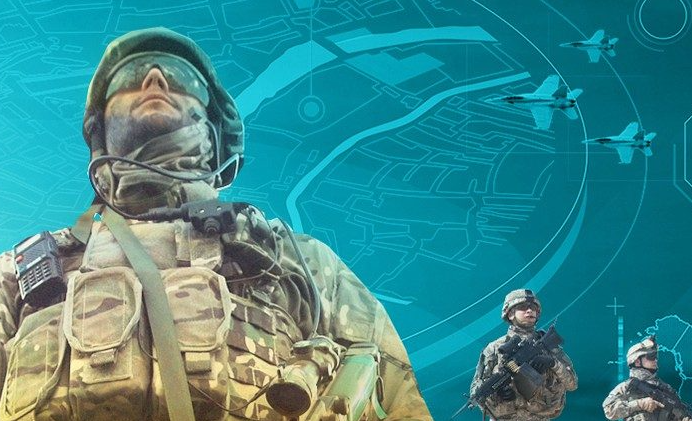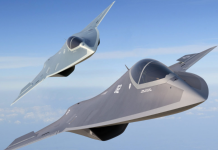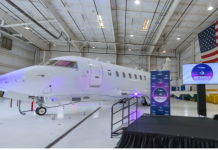The rate of technology development is accelerating today, and the Defense Department is adapting to foster emerging technology.
As stated in the recently released National Defense Science and Technology Strategy, accelerated technology advancement and innovation are key elements to achieving department priorities.
The upcoming 2023 National Defense Industrial Association Emerging Technologies Conference is an event where we can focus on and discuss what we’re doing and what we need to do to accelerate technology advancement and innovation.
The Aug. 28-30 conference will be a venue for government and industry to discuss how to build the partnerships necessary to rapidly move emerging technologies and capabilities into the hands of our warfighters, from the laboratory to the theater. Fostering more direct dialogue between customers, such as operational users, and industry innovators is a good way to help speed up the innovation process.
We expect that this event will bring together an exciting mix of speakers and attendees, including program executive officers, program managers, warfighters, and technology leaders from both the Office of the Undersecretary of defense for Research and engineering and their partners in the Office of the undersecretary of defense for acquisition and sustainment.
There will also be key industry program leaders, technical experts and business development officers. High-level keynote speakers from the Office of the Secretary of Defense, military services, industry and academia will discuss the broader technological competition and the critical need to deliver new capabilities. Panels and breakout rooms that mix industry and government technical and acquisition experts will dig deeper into the details of what industry and the department need from each other to better identify, develop and field emerging technologies.
We will focus on some of the highest-priority joint mission areas, with a strong focus on counter-unmanned aerial systems, operational energy and contested logistics. NDIA will be accepting abstracts on technologies within these three tracks that show results, and which can be fielded in the next five years. In addition to these specific mission areas, the conference will also focus on “game-changing” emerging technologies such as microelectronics, artificial intelligence, FutureG technologies and biotechnology. Additionally, companies and government agencies will be displaying their new technologies and showcasing their innovative activities in the conference exhibit hall.
The counter-UAS track looks at the challenge of countering the major proliferation of unmanned aerial systems in theaters across the world, including the Middle East and Ukraine. UAS are inexpensive and can be deployed against vulnerable targets, requiring solutions that leverage emerging technologies to detect, track and defeat these systems cost-effectively. The Defense Department needs technologies that can be integrated into existing air defense systems and are looking for ideas on rapid buying of smaller, software-enabled systems.
Given increasing power needs for American capabilities and warfighters, this year’s conference also focuses heavily on emerging operational energy technologies, which include those that increase the military’s ability to generate more power, store that power for longer durations or use energy more efficiently.
Warfighters require lighter battery loads, more range and up-time for defense capabilities and reduced vulnerabilities created by the need to move fuel to theaters around the world. The exhibition will showcase next-generation, dual-use energy technologies that are crucial to today’s energy needs, such as batteries, more efficient fuel and engines, and electric vehicles.
The third track, contested logistics, focuses on emerging technologies that will help mitigate the logistical challenge faced by the military. Future operations will take place in expansive geographic theaters, so warfighters will require sustained and secure access to equipment, troop replenishment, fuel and other supplies. At the same time, warfighters are more vulnerable to increasingly precise, long-range attacks that can take the form of kinetic strikes or far-away cyber campaigns. To anticipate and counter these challenges, the conference will discuss the emerging technologies ranging from artificial intelligence to advanced manufacturing that can improve the military to better plan for and execute missions in contested environments.
We are excited by the conference agenda and activities and invite you to attend. Science-and-technology practitioners — from the defense industrial base, the commercial technology sector, and the Defense Department — will have the opportunity to discuss their work, find potential partners, and understand how their technologies fit into key mission areas. Acquisition professionals, officials from the research and defense community and uniformed service members will be able to use this conference to collaborate and find opportunities for the new technologies that support joint warfighting plans.
This kind of collaboration will drive the innovation needed to achieve DoD priorities, and to ensure our national security over the long term. To learn more about the conference, including details on registration and exhibiting at the event, please visit https://www.ndiatechexpo.org/. ND
Heidi Shyu is the undersecretary of defense for research and engineering. Dr. Arun Seraphin is the executive director of NDIA’s Emerging Technologies Institute.





